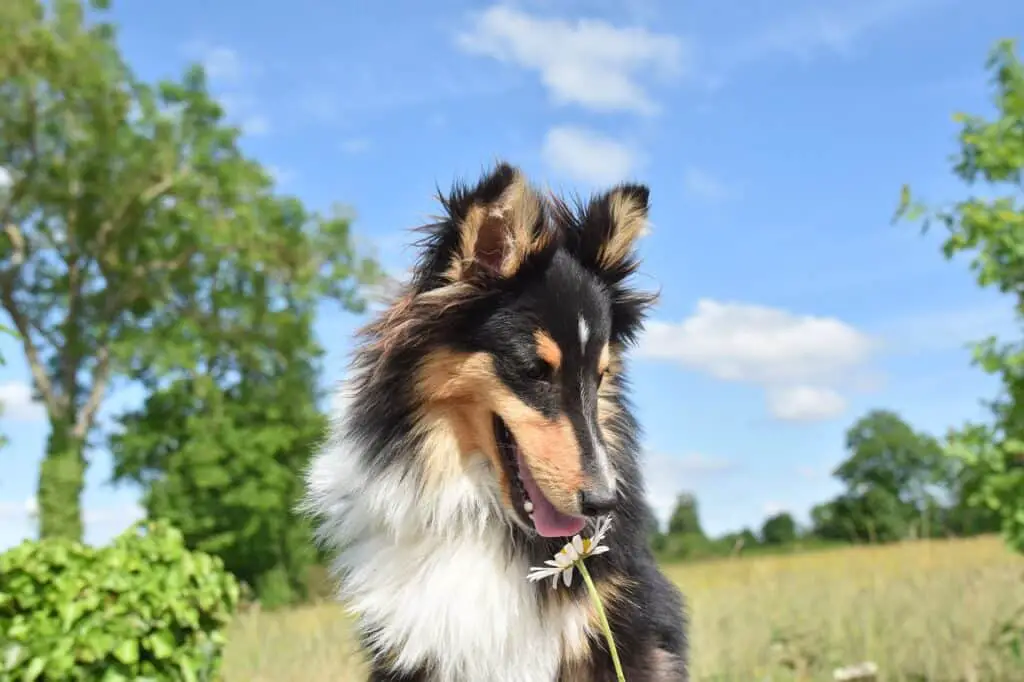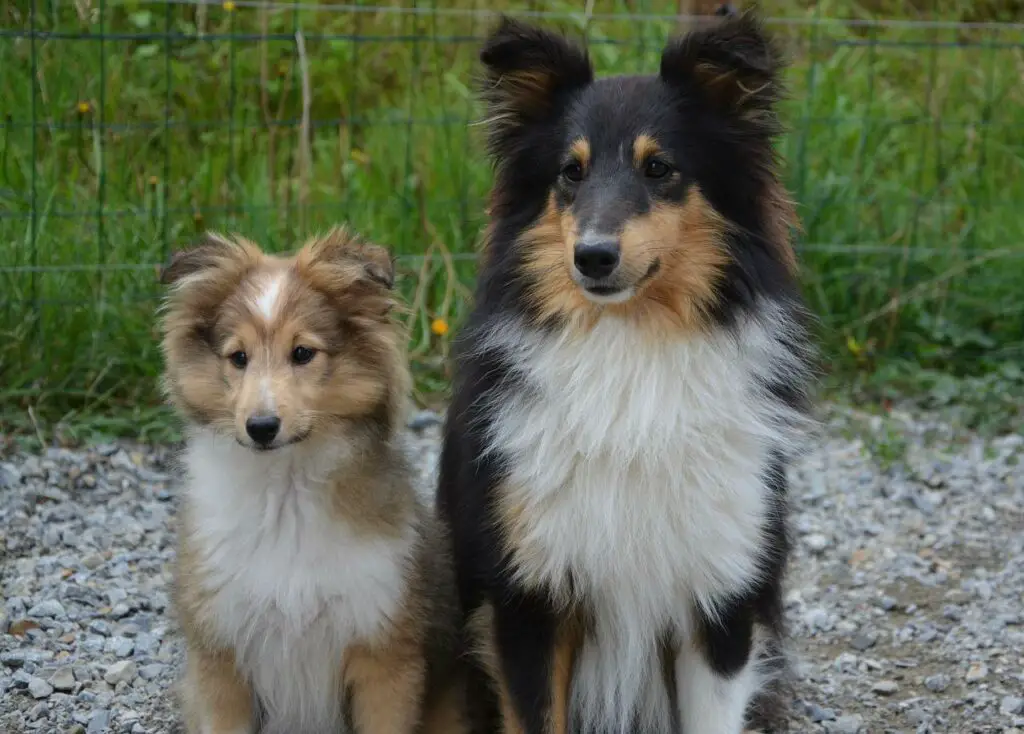Sometimes referred to as Shelties, Shetland Sheepdogs are known for being gentle, playful, and affectionate.
Although they are an excellent dog breed, it’s essential to know everything about it before bringing one home.
One of the things you may ask yourself is, do Shetland Sheepdogs shed?
Yes, Shetland Sheepdogs do shed.
They shed all year round, but for the full undercoat, shedding happens twice yearly during fall and spring.
This shredding is from their double coats, which equals two fur layers.
This article is a must-read before you bring a Shetland Sheepdog home.
It gives you in-depth coverage of all the questions you may have concerning this dog’s shedding.
By the end of this article, you’ll know how much a Sheltie shears, the reasons for the shedding, and how you can minimize it.

Influential Factors in Shetland Sheepdogs’ shedding?
Some factors influence how much a Shetland Sheepdog sheds.
While you can control some of them, others are a natural process.
These factors are:
Age: A Shetland Sheepdog grows and develops its coat with age. First, the soft undercoat grows, followed by the coarse and long topcoat. Puppies below one year don’t shed at all; if they do, it’s unnoticeable. When a Shetland Sheepdog gets to around 3-5 years, the coat is fully developed, and they become heavy shedders.
Time of year: Although Shelties lose fur throughout the year, their full sheds happen once or twice yearly. This is during spring and early fall when it gets warmer and cold outside. Expect heavy shedding in April, May, August, and September.
Hormones: Another factor that affects the amount of shedding in Shelties is hormones since they determine how frequent this breed requires blowing. Female Shelties shed more than the males. The sterilized males have one full shed once in two years. For the females, if unsprayed, they’ll shed before summer and every 6-8 months following their heat cycle.

Why do Shetland Sheepdogs shed a lot?
Shetland Sheepdogs have a double coat that provides them with warmth.
This means they have plenty of furs. Let’s delve into the reasons why they lose this fur a lot.
To replace their pelage: A Shelties’ pelage undergoes constant replenishment, meaning it naturally loses hair to give way to new hairs. The pelage goes through a cycle of growth, dying, falling off, and replacement. This cycle is faster in Shetland Sheepdogs than in other dog breeds.
They have lots of hair: This breed has a thick, woolly undercoat that tangles from lack of grooming. Its long, straight outer pelage can become matted when not brushed daily. Due to their hair volume, when this dog breed sheds, the amount of shedding is a lot.
How can you reduce a Shetland Sheepdog’s shedding?
Once you bring a Shetland Sheepdog home, you should be ready to deal with frequent shedding in your house.
However, you can minimize this shedding and spend less time cleaning up. Below are tips you can use:
Choose healthy diets: A balanced diet means a healthy coat. Feed your Shetland Sheepdog quality, healthy foods containing minerals, proteins, and vitamins. Beneficial nutrients give your dog a strong and shiny coat that sheds minimally. Consult your veterinarian for advice on the best food for your dog.
Groom: Grooming minimizes shedding, and you should ensure your Sheltie receives proper cleaning. When cleaning, use a shampoo recommended for double-coated dogs, a gentle brush, and lukewarm water. Brush your Sheltie regularly because it has a double coat and sheds frequently. Do this once every week for 30 minutes using a high-quality brush. For the hairs around the ears and eyes, clean them regularly using a wet soft cloth and trim to avoid infections.
Sterilize: A sterilized Shetland Sheepdog has fewer full sheds than an unsterilized one. Sterilizing a female reduces its full sheds to once a year while a male’s decreases to one time every two years.
Can you shave a Shetland Sheepdog?
Since Shelties have a double coat with long, thick hair, it may seem cool to shave them to give them a cool appearance.
You shouldn’t shave a Shetland Sheepdog’s coat.
It keeps the dog warm during cold weather and protects it from windburn.
During hot weather, the double coat protects your dog from sunburns.
Cutting this dog’s hair right to the skin is not recommended.
Sometimes a veterinarian may advise you to trim where the hair is growing long, but you shouldn’t cut too much as it will expose your dog to extreme weather conditions.
What can increase a Shetland Sheepdog’s shedding?
Although Shetland Sheepdogs are heavy shedders, sometimes you may notice that they shed excessively despite taking measures to minimize it.
This could be a result of the following:
Stress: When your Sheltie is under stress, it sheds uncontrollably. This could be a result of discomfort or neglect. Perhaps you have moved to a new environment that your Sheltie hasn’t adjusted to, or you’ve been too busy for it.
Underlying health conditions: If a dog has underlying health issues, one of the telltale signs is abnormal shedding. Some health conditions that lead to this include:
- Cancer
- Allergies
- Skin disease
- Bacterial infections
- Liver and kidney diseases
FAQs
Are Shetland Sheepdogs hypoallergenic?
Shetland Sheepdogs are not hypoallergenic.
They cause allergic reactions, making them unsuitable for those with fur allergies.
When do you need to consult a veterinarian about a Shetland Sheepdog’s shedding?
You should consult a veterinarian if your Sheltie’s shedding is accompanied by symptoms such as skin dryness, patches, itchiness, rashes, and dry hair that pulls off.
These are signs of underlying health conditions.
Conclusion
Shetland Sheepdogs make good companions and watchdogs.
They’re heavy shedders and may not be the ideal choice for neat freaks and those with fur allergies.
Although you can’t stop their shedding, the good news is you can minimize it through regular grooming, healthy diets, and sterilizing.
Once you get a Sheltie, avoid trimming its coat as it acts as a protective layer from extreme weather unless a veterinarian advises.
- What Dog Breeds Have Pink Skin? - March 24, 2023
- What Are the Most Inspiring Dog Breeding Quotes? - March 20, 2023
- Can Pheromone Spray Help Improve Dog Breeding Results? - March 19, 2023








